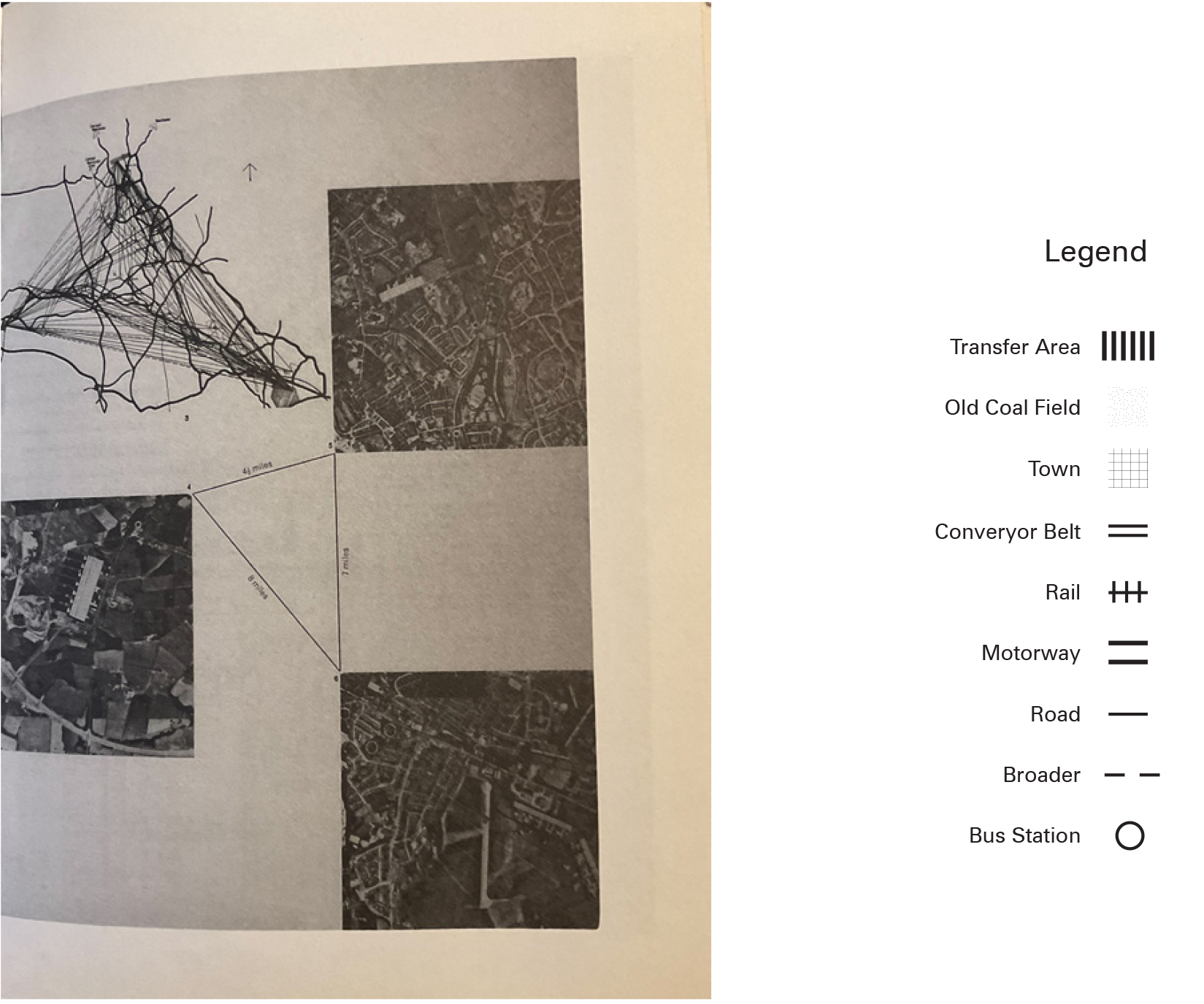Post Thinkbelt
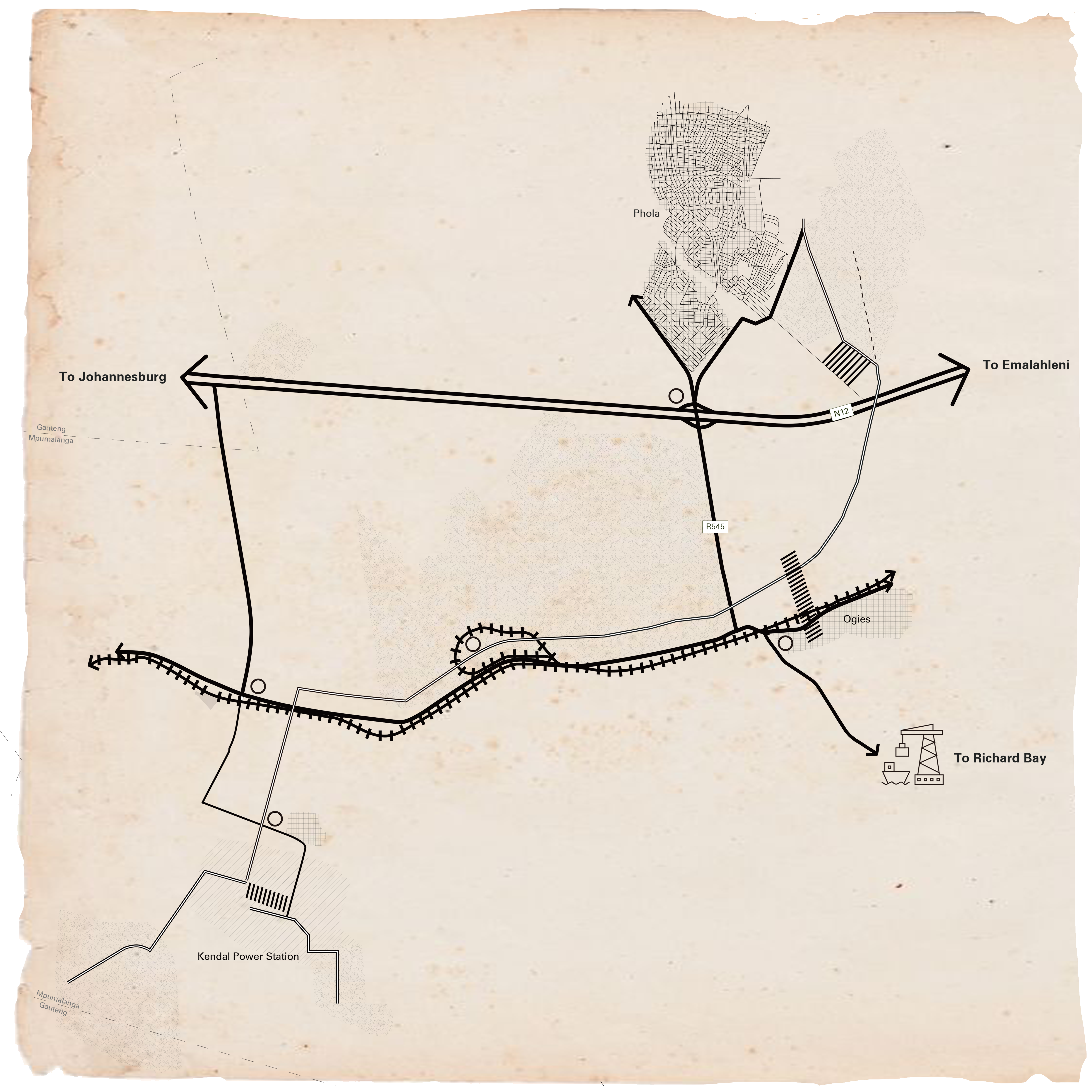
Coalfields usually have a close connection with thermal power stations, between two of the major infrastructures there is a systematic transportation network. 80% of power stations in South Africa are coal-fired and most of them will be retired in the following 50 years. The project aims to propose after the retirement of these power plants, how can these industry landscapes benefit within the township by transportation network such as conveyor belt, road, and rail system. The belt will construct a big campus that can educate the pre-coal mining workers and supply them with job opportunities. At the same time building the public space through the belt to increase the social value and community identity of these areas.
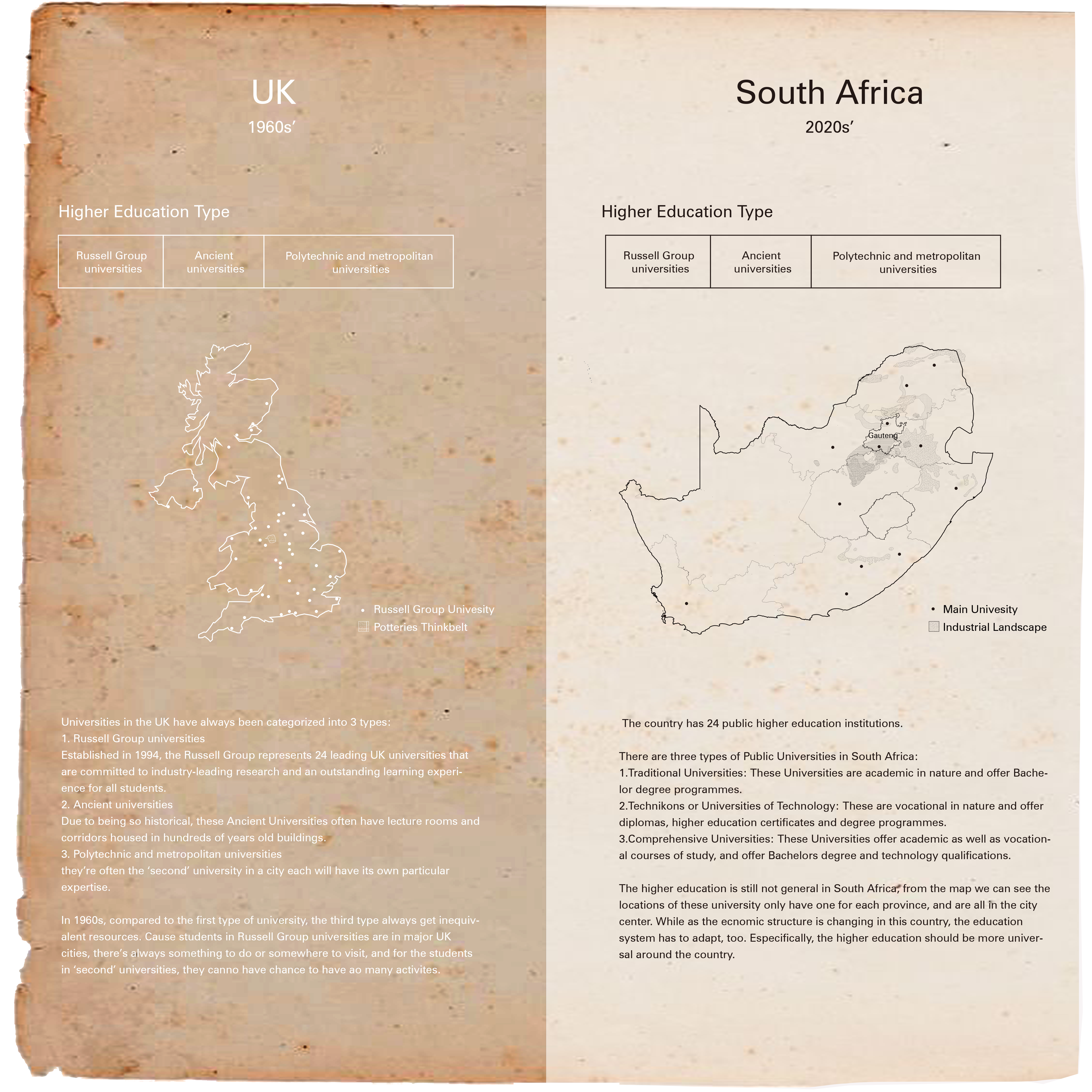
Intro of Post-Thinkbelt
To understand the context of the "Pottery Thinkbelt" project, there are 3 typed of university in the UK. The Russell Group universities are regarded as the most prestigious university such as Cambridge and usually located in the big city, students there can get a lot of chance and resources. In contrast, there are ‘local university’ which usually be seen as the ‘second university’ and get less resources specifically in 1960s.Cedric Price’s idea of Potteries Thinkbelt is through the transportation of industrial landscape to make a education network within the community, to resist the idea of higher education is only belong to “gentlemen“, everyone should have equal chances to be educated.
Same situation in South Africa now, there are only 26 universities in the entire country and they are in the center of each province. Since the country’s energy relys on coal industry so much, there are multiple complete industrial network that outside the city center. Considering all these landspace will be exhausted in future 50 years. This project plagiarizes Cedric Price thoughts and adapt to the current South Africa situation.
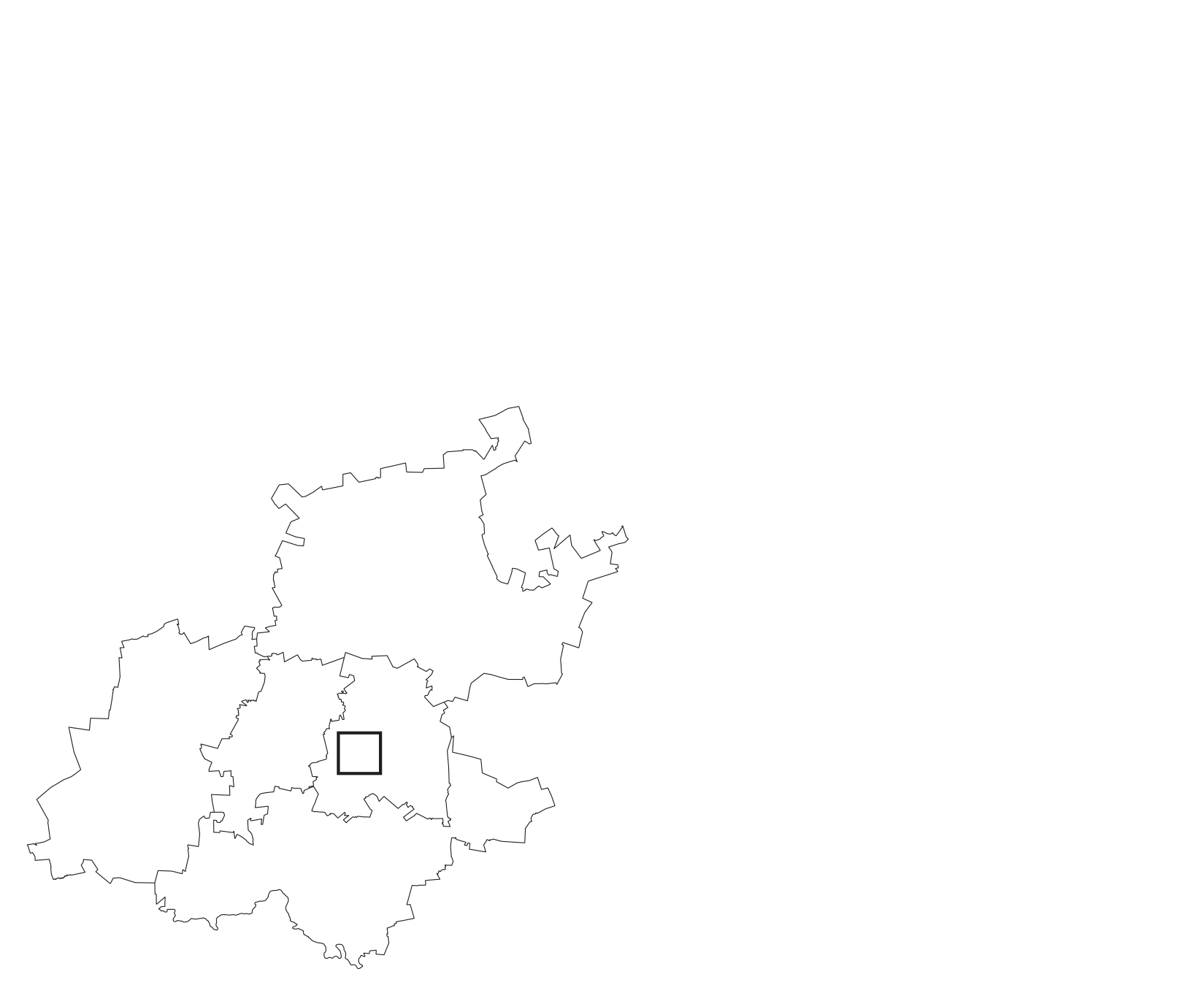
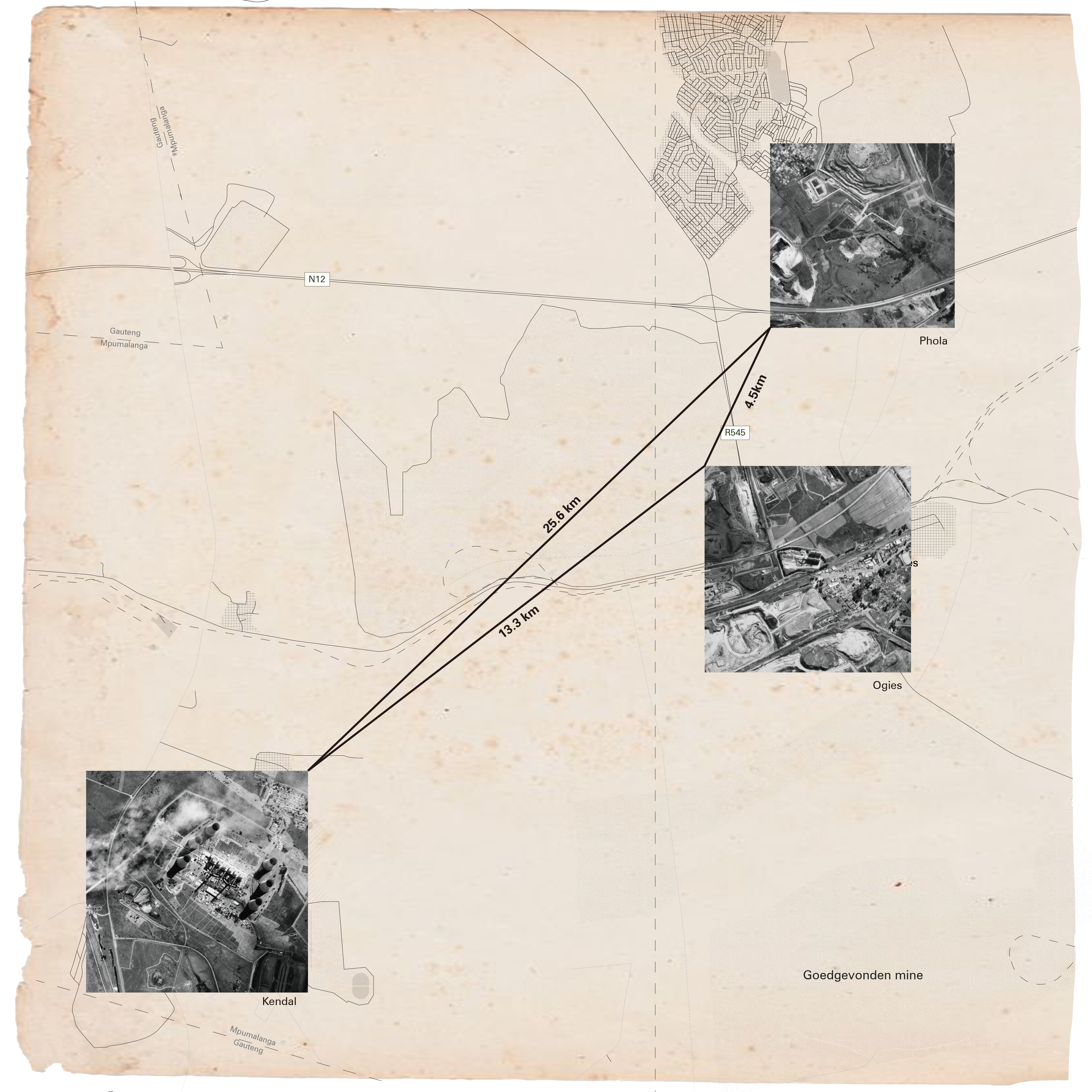
Construct Post-Thinkbelt
The project is located in the Mpumalanga Province, which is the main coalfield area in South Africa. The area is around the biggest power station-Eskom Kendal Power Station- in the South Africa.
Coalfields usually have a close connection with thermal power stations, between two of the major infrastructures there is a systematic transportation network. 80% of power stations in South Africa are coal-fired and most of them will be retired in the following 50 years.
